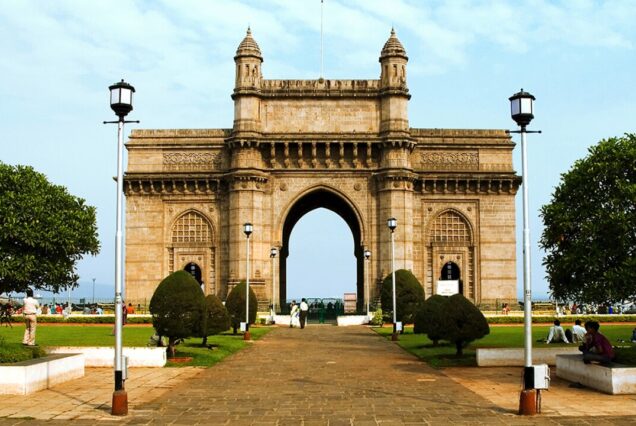JAIPUR
Any traveller interested in learning more about India’s rich cultural heritage must make time to visit Jaipur. This Rajasthani capital city, named for Maharaja Sawai Jai Singh II, has a wealth of entertaining activities, beautiful architecture, and interesting historical tales to tell. Check out our Jaipur Sightseeing Tour Package for the ideal way to explore everything this magnificent city has to offer in comfort and luxury, and to make your vacation even more delightful!
With its magnificent palaces, gardens, lakes, and monuments, Jaipur is a city rich in history. From colorful celebrations like the Teej Festival and Kite Festival to delectable food, this pink city has a lot to offer. Because there are so many attractions to choose from, planning a trip might be difficult. That’s why we’ve gathered some of the best private car tour packages for local sightseeing in Jaipur from leading tour operators, allowing you to easily take advantage of everything the city has to offer!
Main sightseeing points in Jaipur:
Amber Fort and Palace, Nahargarh Fort, Jaigarh Fort, City Palace, Hawa Mahal, Jantar Mantar, Jal Mahal, Albert Hall Museum, Rambagh Palace, Birla Mandir etc.
DAY TOUR JAIPUR:
Itinerary:
You will be picked up by our representative from the hotel or airport in Jaipur, then first we will take you to Amber Fort, where you can enjoy the panoramic view uphill from Amber Fort. Experience the thrill and joy of an elephant ride at the fort. Visit Jal Mahal (The Water Palace). Admire the beauty of the Hawa Mahal. See Jantar Mantar, the largest stone astronomical observatory in the world. Visit the magnificent City Palace, which is the home of the Maharaja.At the end explore the magnificent Albert Hall Museum.
Explore Jaipur’s buzzing central market in the evening.
After visiting the places, we will drop you back at your desired place in Jaipur.
Tour Plan
Amber Fort: Amber, the former capital of the state of Jaipur, is located on the Jaipur - Delhi highway slightly over 10 miles from Jaipur. Every half an hour, a bus departs from Hawa Mahal. A carefully designed road leads the traveler outside the city, where they soon come across verdant hills. There's a lake there, and the magnificent Amber Fort, seen as a strategically advantageous military structure by multiple Jaipur emperors, stands next it. The Dil-e-Aram garden, designed in the classic Mughal style, is the first stop on the tour. In ten minutes, one can ride an elephant or take a jeep up to the fort from the road.
The diwan-e-aam, or hall of public audience, features two rows of columns with capitals depicting elephants on top, as well as latticed galleries. There are stairs to the right that go to the Kali temple. The temple is a magnificent sight, accessible by a doorway that is adorned, and it features enormous doors made of silver metal. The Jai Mandir features exquisite inlaid panels and a shimmering roof made of mirrors. The Sukh Niwas is in front of the Jai Mandir. It features a sandalwood door that has an ivory inlay and a channel that was formerly used to transport cool water. The zenana, or women's rooms, were built so that the maharaja could enter different chambers with ease and without the need for any concubines.
City Palace: The City Palace complex, one of Jaipur's greatest architectural wonders, is a unique example of the best fusions of Mughal and Rajasthani design. It's a large space right in the middle of the historic city. Jai Sigh constructed the outside wall, with extensions made until the 20th century. The complex consists of numerous buildings, thoughtfully designed gardens, and expansive courtyards.
Sawai Madho Singh II built the Mubarak Mahal (Welcome Palace) as a reception area for visiting dignitaries. Although it is currently a part of the Sawai Man Singh II museum, the Mahal is located before the main complex. In addition to shawls, embroidery, Benaras silk sarees, the Maharaja's Pyjamas, Chogas, jamawars, kamarbandhs, giant tanpuras and sarangis, and a set of Sawai Madho Sing I, who stood just over seven feet tall and more than four feet wide and supported a goliathic weight of 250 kilograms, are among the many royal costumes, accessories, and musical items displayed in the museum.
JANTAR MANTAR: Among the five observatories built by Sawai Jai Singh, Jantar Mantar is the biggest and best preserved. It is constructed of marble and stone, whose settings and shapes are among the pinnacles of Indian medieval astronomy and are planned scientifically.
ALBET HALL: Located within the stunning Ram Niwas Bagh Garden. Sir Swinton Jacob designed this exquisitely styled saracenic building. It opened as a public museum in 1887. It includes the well-known Persian Golden Carpet, an Egyptian mummy, paintings, sculptures, and a rare collection of ornamental artifacts.
HAWA MAHAL: Palace of wind
The most exquisitely crafted structure in Jaipur, the Palace of Wind, was constructed in the 18th century on the poet king Sawai Pratap Singh's orders and is a remarkable landmark in Rajasthan. Seen from the Serai Deori bazaar, the complex's multi-vented, five-story rear is visible. The idea was to provide the palace women a good spot to observe the royal processions as they passed through the market from behind the stone-carved screens that resembled mesh. There is presently a museum there with collections of sculptures, coins, paintings, and handicrafts. The unique aspect of the museum is Jaipur—past and present.














